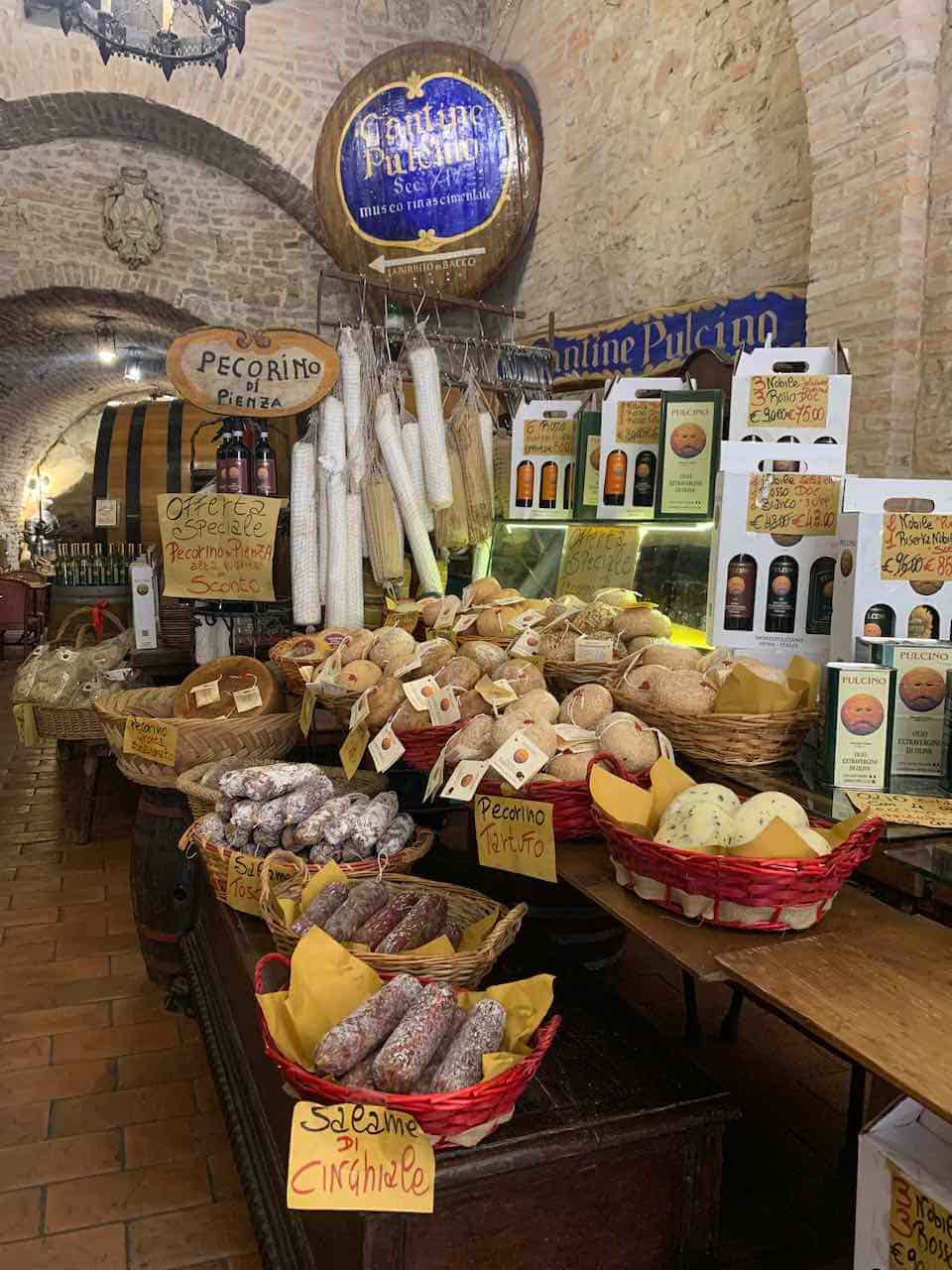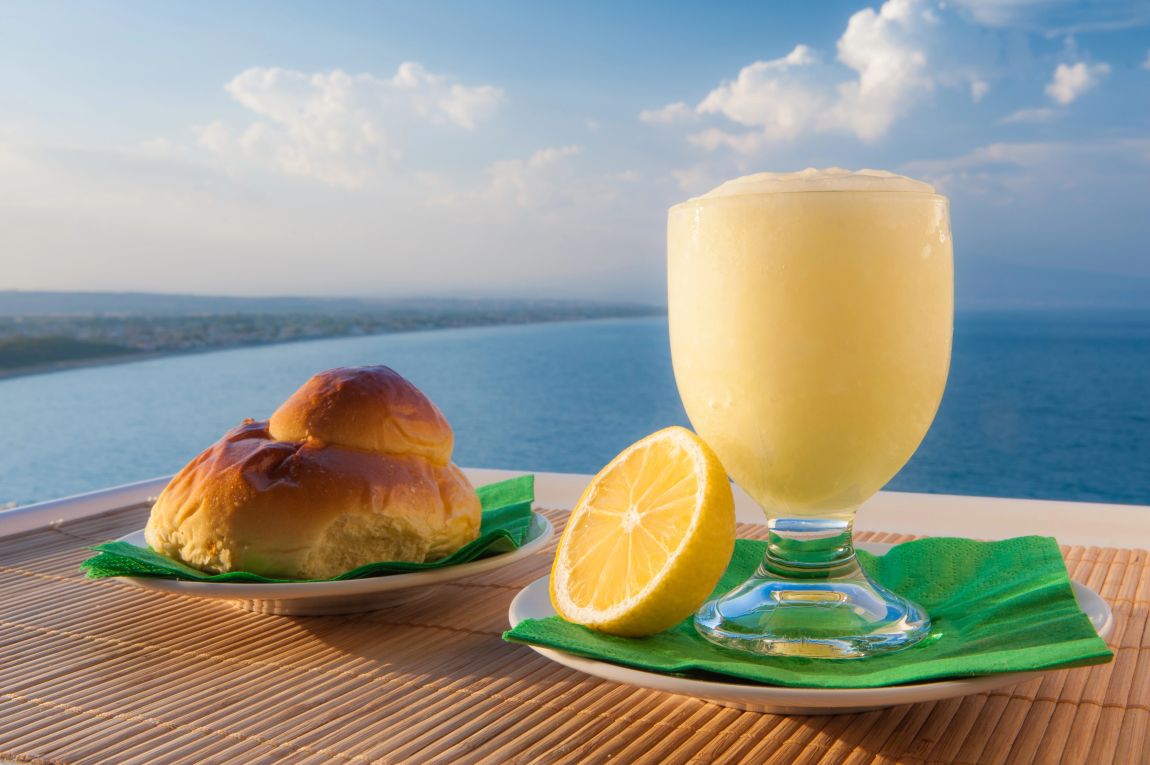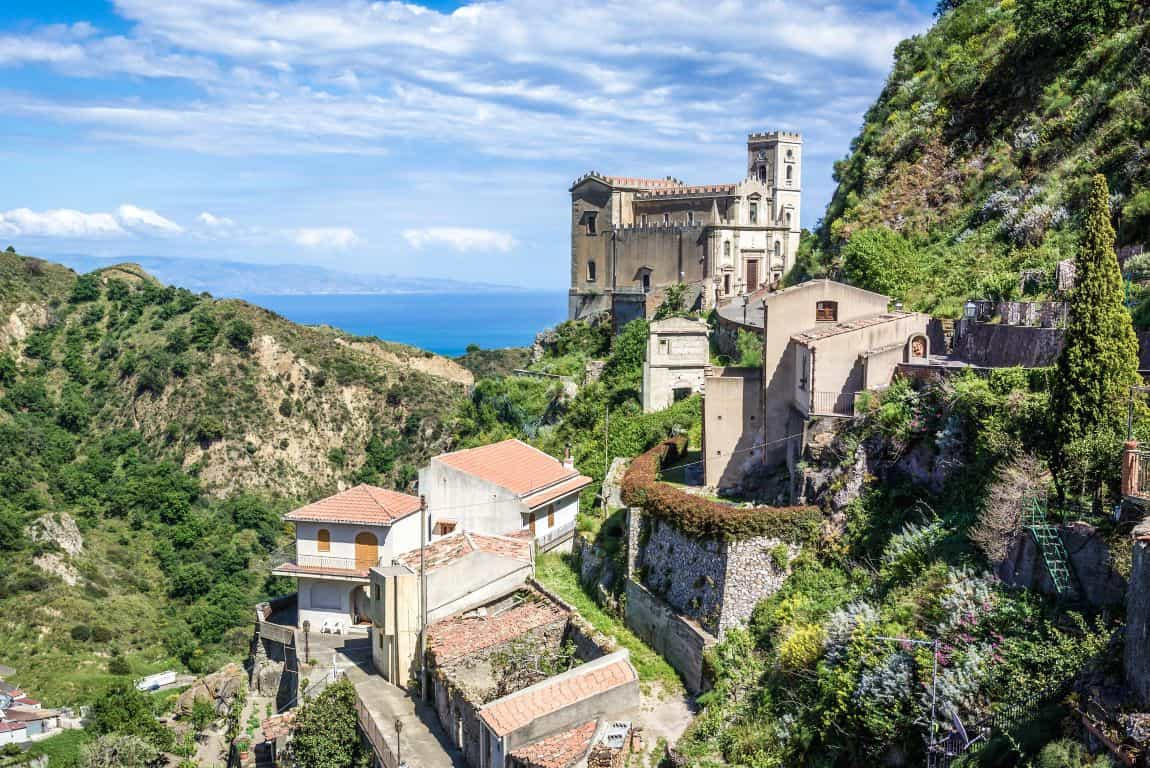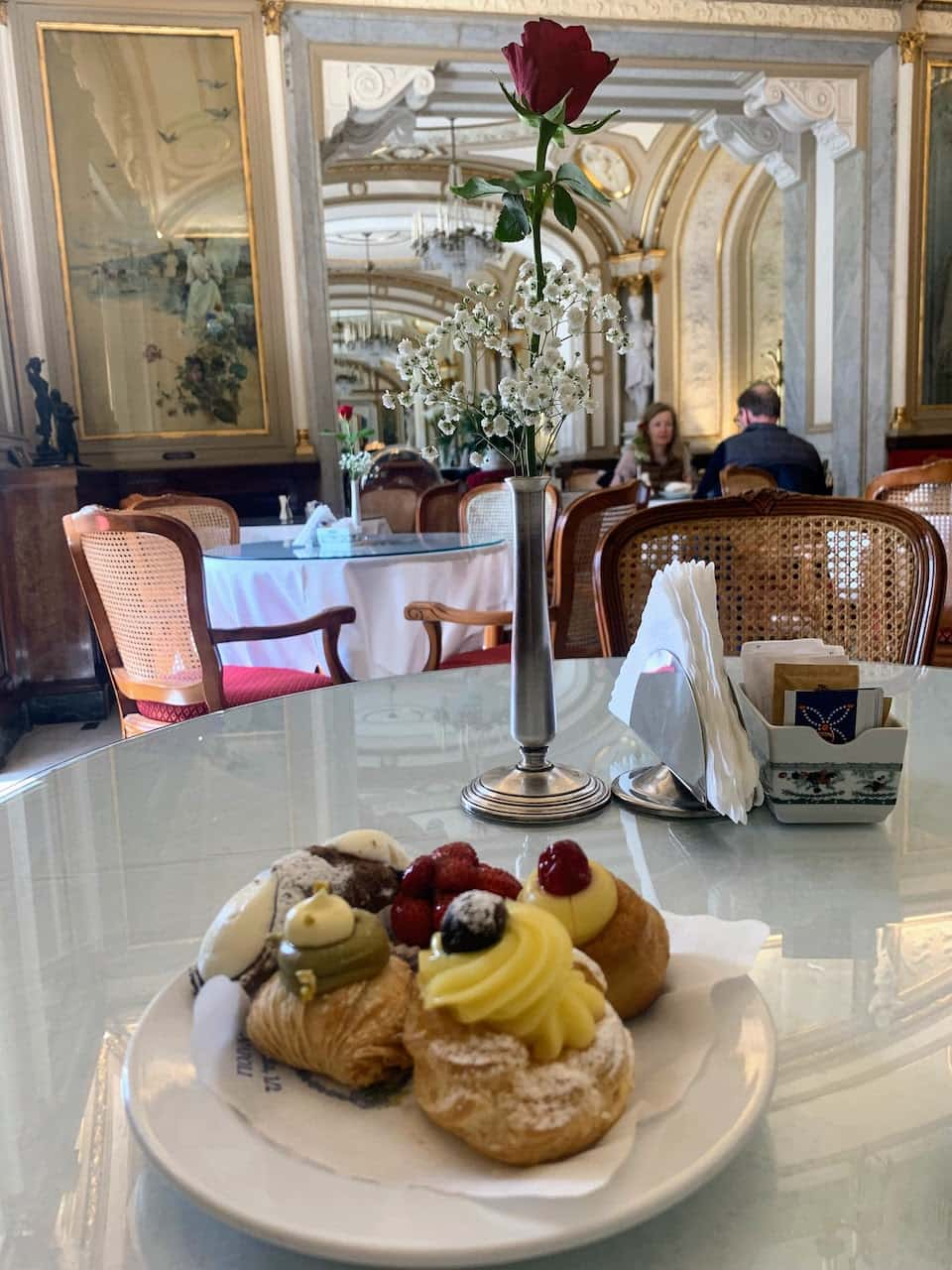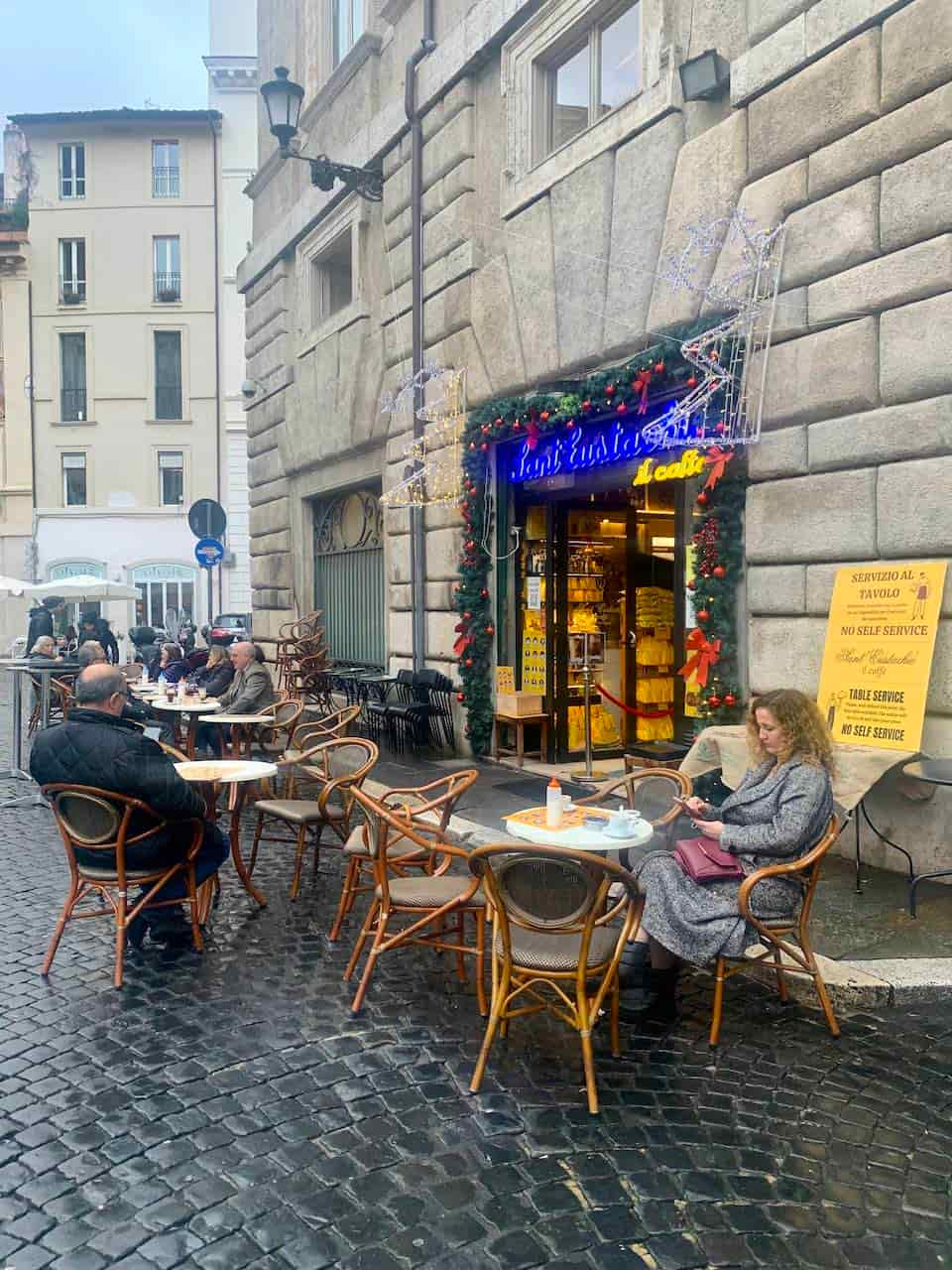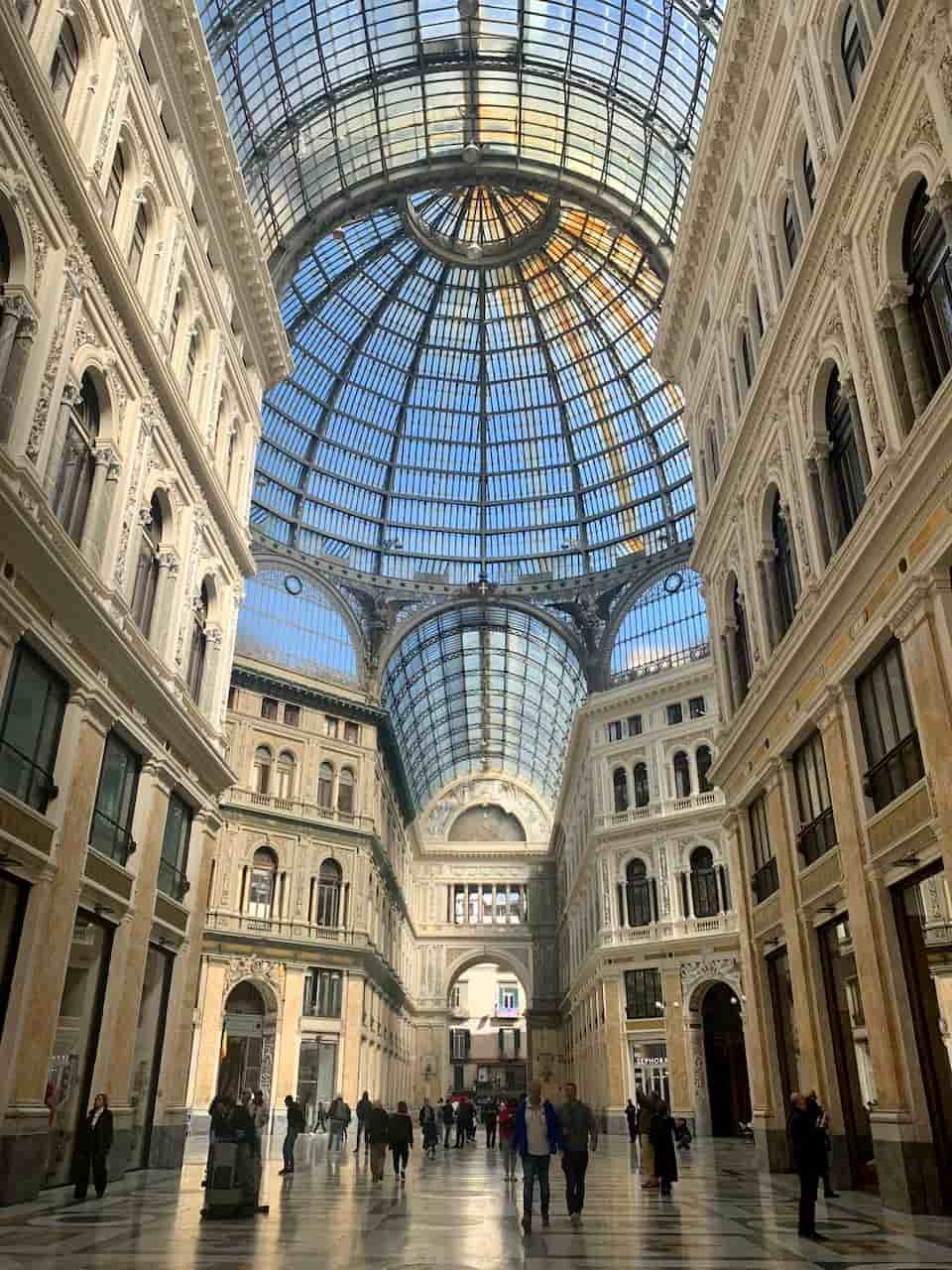Villa Romana del Casale, Sicily: Italy’s UNESCO Site That Is More Magical Than Pompeii!
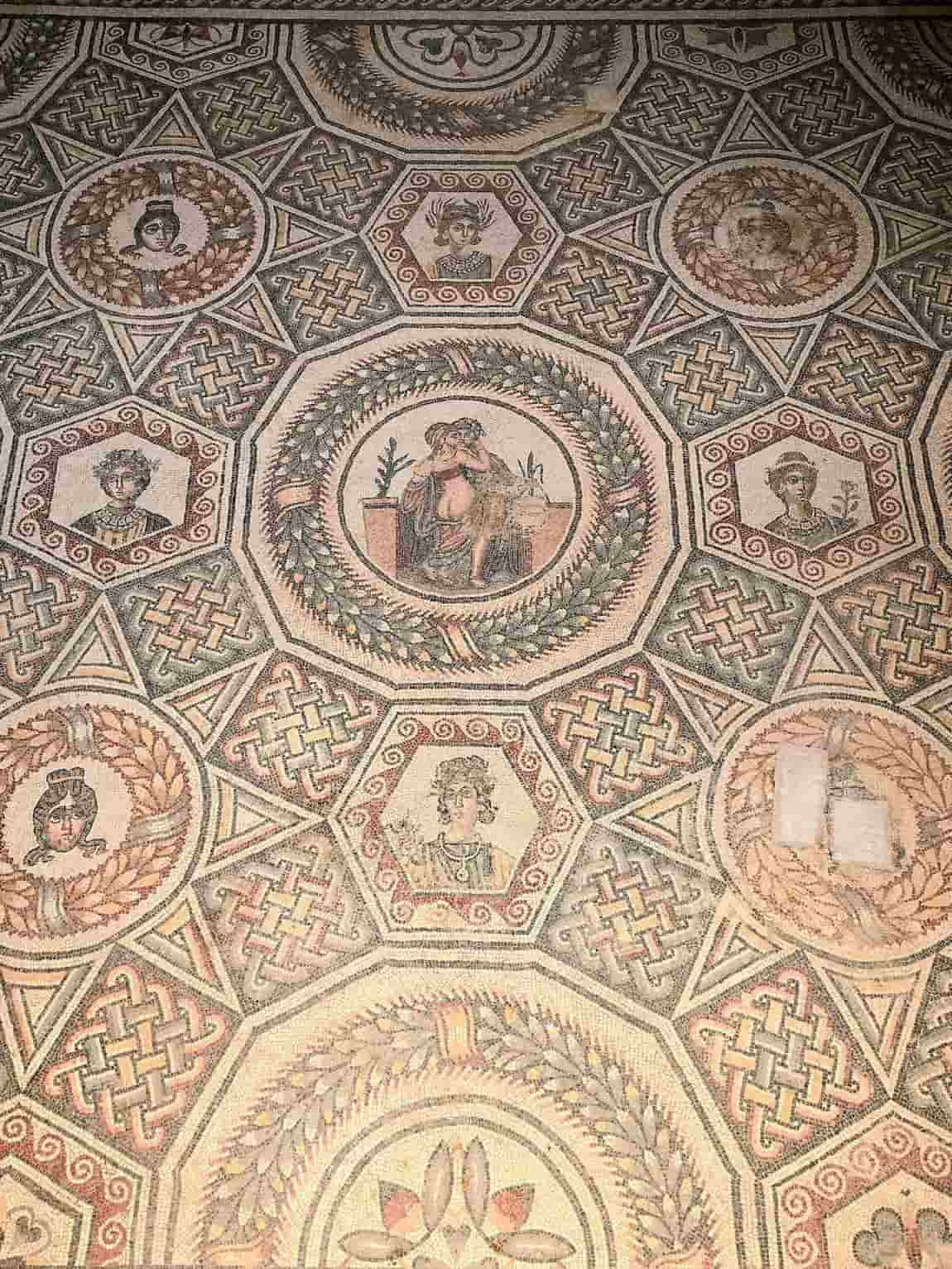
A Guide to Visiting Villa Romana Del Casale Sicily: A Must-See UNESCO World Heritage Site!
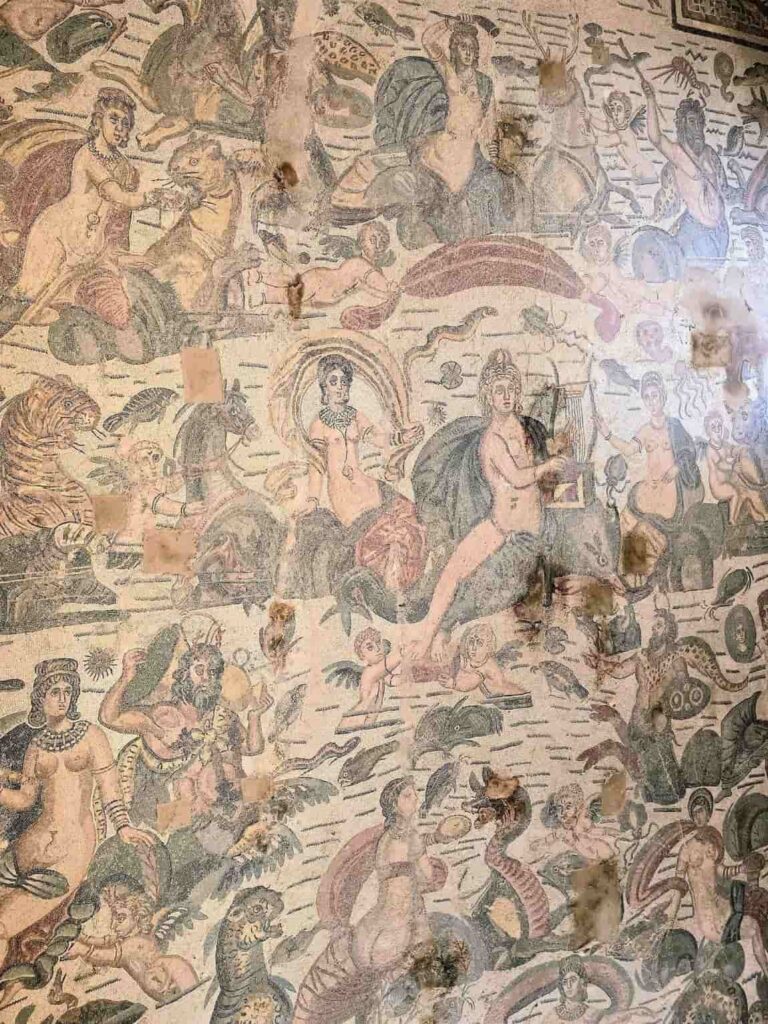
Set near the town of Piazza Armerina in central Sicily, Villa Romana del Casale is one of Italy’s most exceptional ancient sites.
The Villa Romana del Casale offers a breathtaking journey into ancient Roman luxury, where vivid mosaics and grand halls whisper stories from over 1,700 years ago. Recognized as a UNESCO World Heritage Site, this vast Roman residence dates to the 4th century AD and houses the largest, most intricate, and best-preserved collection of Roman mosaics in the world! These stunning works of art—still in their original locations—offer a vivid window into the luxury, leisure, and life of the late Roman Empire.
I visited the villa during my Sicily road trip as a stop between Agrigento and Ragusa, and it quickly became one of the most memorable experiences of the entire journey. Visiting Villa Romana del Casale is a must for any traveler exploring Sicily, especially for those with an interest in history, art, or archaeology.

THIS POST MAY CONTAIN COMPENSATED LINKS. PLEASE READ MY DISCLAIMER FOR MORE INFO.
What is Villa Romana del Casale?
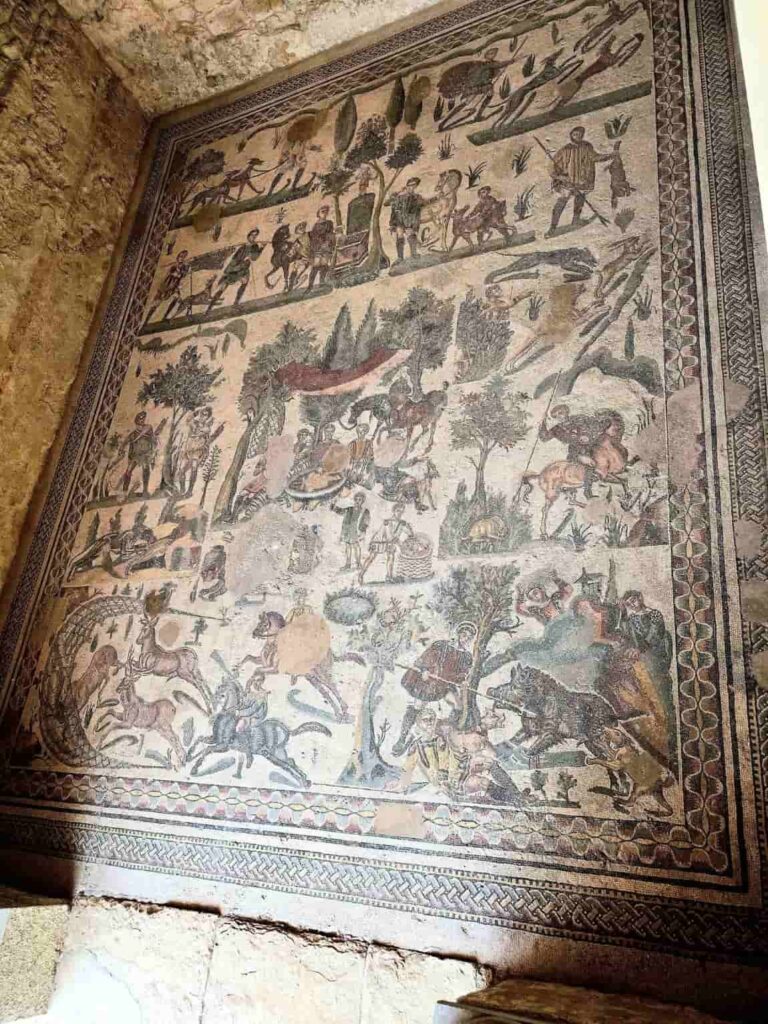
Villa Romana del Casale is a sprawling late Roman villa built in the 4th century AD, renowned for housing the largest and most intricate collection of Roman mosaics in the world, covering 3500 square metres. As such, it is a UNESCO World Heritage Site. Villa Romana del Casale was once the private estate of a powerful Roman aristocrat—presumably a Roman senator who traded with exotic animals from Africa, filling the arenas of the ancient Roman Empire with them. Covered by a mudslide in the 12th century and rediscovered centuries later – in the 19th century, Villa Romana del Casale in Sicily is a perfectly preserved time capsule of Roman luxury, art, and architecture.
Why You Should Visit Villa Romana del Casale

If you’re even remotely intrigued by ancient history, Roman civilization, or art that literally stops you in your tracks, Villa Romana del Casale is a must-see. It is a UNESCO World Heritage Site featuring the largest collection and the best-preserved ancient Roman mosaics in the world. However, the villa isn’t a dusty ruin or a fragmented floor here and there—it is a vibrant, immersive Roman world brought to life in vivid color.
It’s not just about admiring ancient mosaics (though they are spectacular!); it’s about walking through the rooms where Roman nobility bathed, dined, trained, and entertained. You’ll feel history beneath your feet, quite literally.
What to See at Villa Romana del Casale
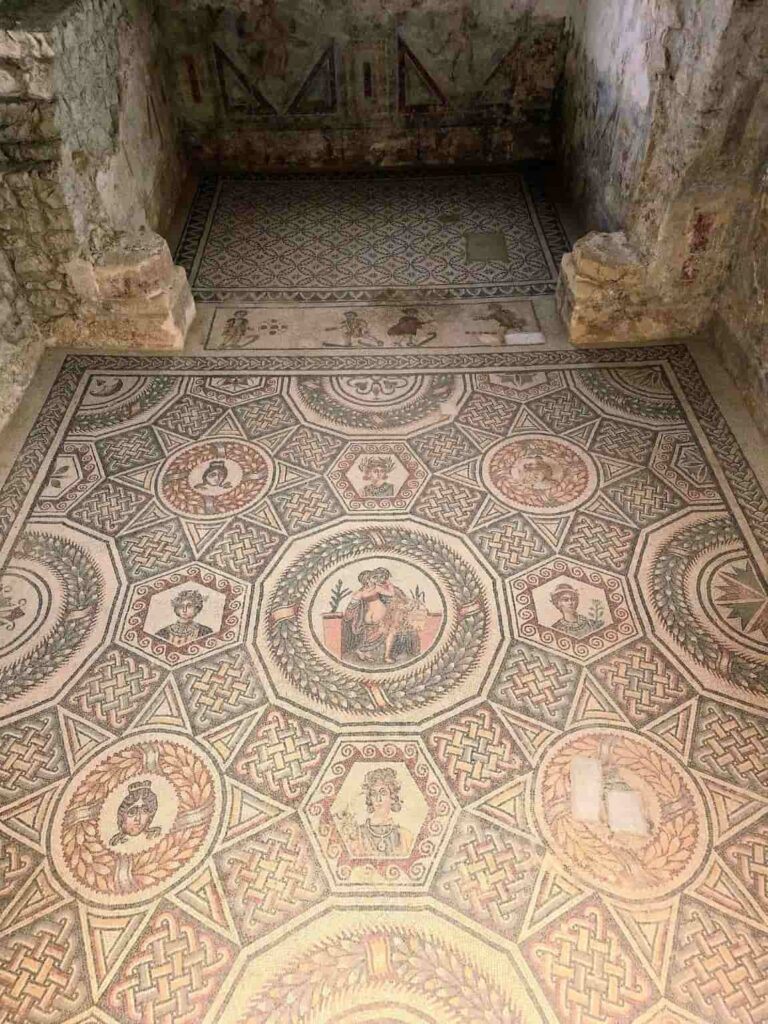
Villa Romana del Casale is more than a single structure—it’s an archaeological complex made up of about 50 rooms, covering 3500 square metres of surface, each with its own story told through vibrant mosaics, elegant columns, and layers of Roman life. From lavish bathing areas to elaborate reception halls, every part of the villa reveals a different facet of aristocratic life in late antiquity.
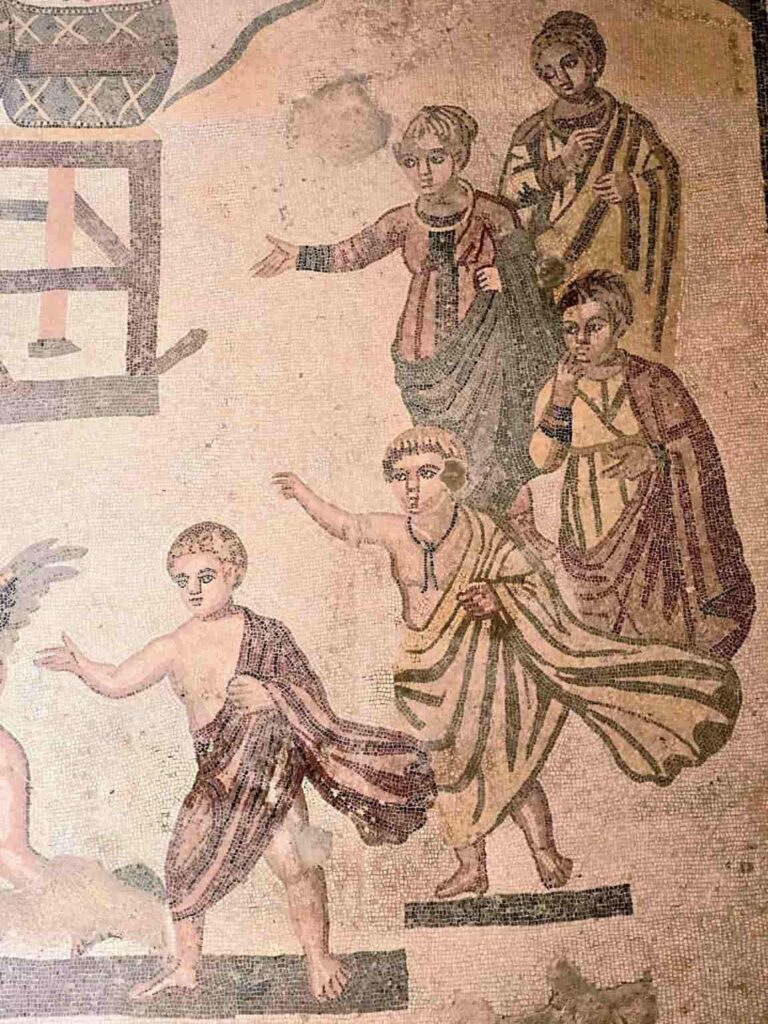
Here are the unmissable highlights to explore:
1. Thermae (Baths)
The villa’s private bath complex, or thermae, is one of the first sections you’ll encounter upon entering the site. It includes a full Roman bathing system, complete with caldarium (hot room), tepidarium (warm room), and frigidarium (cold plunge pool), all connected by a series of well-preserved changing rooms and corridors. The mosaic floors here feature sea creatures, mythological beings, and intricate geometric patterns that would have shimmered beneath rising steam. These baths weren’t just for hygiene—they were spaces for socializing, relaxation, and displaying wealth. Note the advanced heating system beneath the floors: the Romans’ mastery of engineering is on full display. As you walk through, it’s easy to imagine the gentle murmur of conversation and the scent of oils and perfumes lingering in the air.
2. Palestra (Gym)
Adjoining the baths is the palestra, an open courtyard once used for physical training and exercise. Surrounded by colonnades, it offered a serene yet functional environment where Roman elites—both men and possibly women—could stretch, wrestle, and train their bodies as part of a cultured lifestyle. The space likely hosted athletic competitions and leisure activities, preparing bathers before they entered the thermae. Its rectangular layout and central position show the importance the Romans placed on balancing mental and physical health. While the mosaic work here is less elaborate than in other rooms, the design reinforces the theme of movement and vitality. The palestra would have been shaded by canopies or vines, providing relief from the Sicilian sun. Standing here, you can almost hear the rhythmic beat of feet and the distant splash of water from the baths nearby.
3. Peristyle (Courtyard Colonnade)
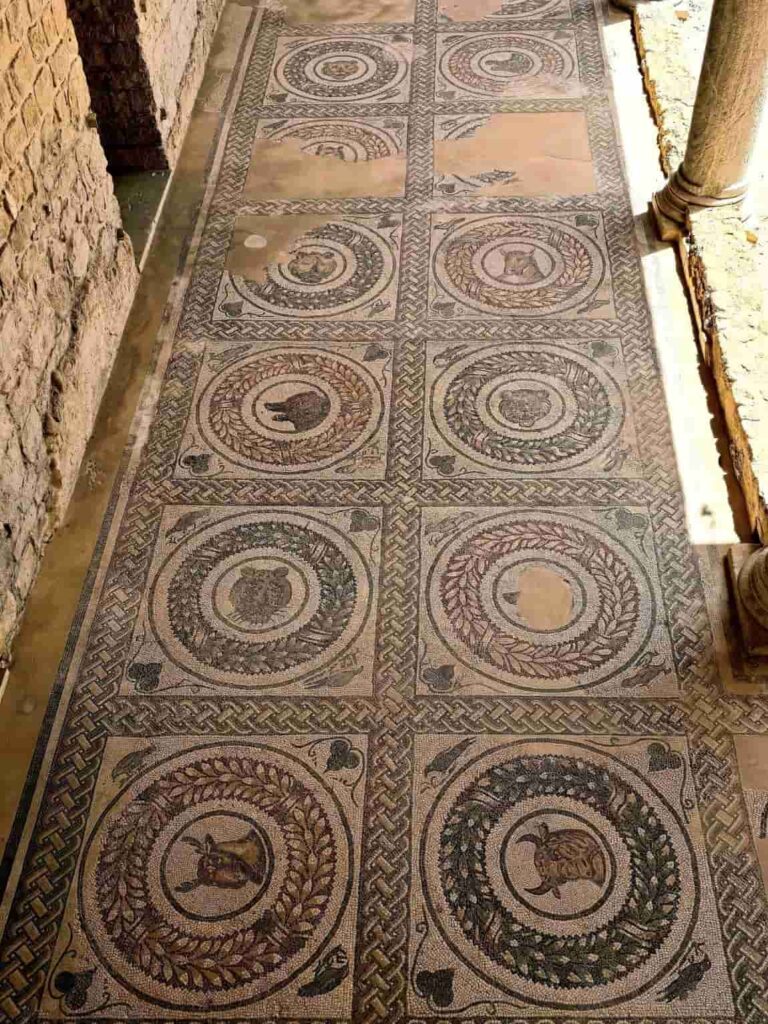
At the heart of the villa is the peristyle—a large, elegant courtyard encircled by colonnades and open to the sky. This was the central gathering space in the home, connecting various residential rooms and offering a tranquil spot for relaxation. The floor is richly adorned with geometric mosaic patterns, and in Roman times, the garden likely featured lush greenery, fountains, and sculptures. The colonnade provided shade and structure, creating a cool corridor on hot days and a theatrical backdrop for hosting guests. It also helped regulate airflow through the villa, blending beauty with function. From here, you can access many of the villa’s most important rooms, including the Room of the Little Hunt, the Corridor of the Great Hunt, and the Basilica. The peristyle speaks to the Roman obsession with harmony, order, and nature—the same ideals that shaped their architecture and worldview.
4. Ambulatory of the Great Hunt (Grand Hall)

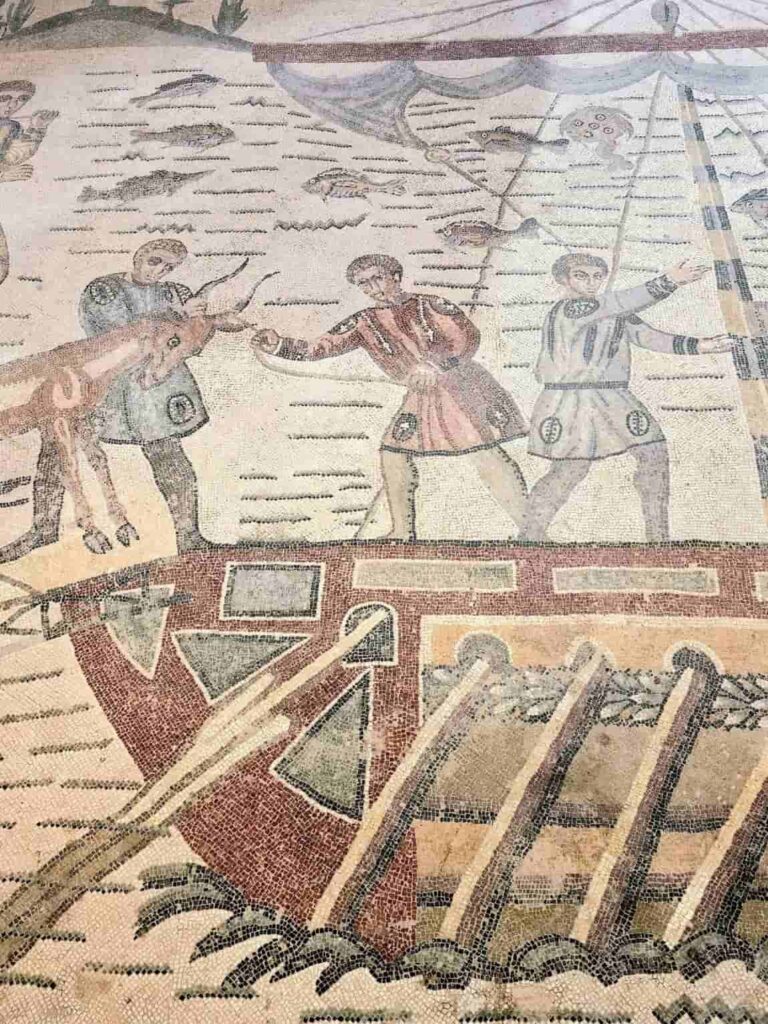
This is the showstopper of the villa—the massive Ambulatory of the Great Hunt, a 60-meter-long corridor filled with one of the most impressive narrative mosaics of the Roman world. The mosaic depicts a grand and exotic animal hunt, showing the capture and transport of wild beasts from across the empire—lions from Africa, tigers from India, elephants, ostriches, and more. It’s more than just a hunting scene; it’s a statement of Rome’s power, reach, and control over the natural world. Figures are shown in dynamic poses, boats and carts transport animals, and the mosaic flows with cinematic energy from one panel to the next. The detail is staggering—each muscle, expression, and texture crafted with skill and nuance. The corridor was likely a gallery for guests, a sort of open-air storytelling chamber highlighting the owner’s status and imperial connections. Walking along it today, you feel like you’re reading an illustrated epic across a marble canvas.
5. Room of the Ten Maidens (Bikini Girls)


Tucked in a more private part of the villa is one of its most famous and endearing mosaics: the Room of the Ten Maidens, often called the “Bikini Girls.” This mosaic shows ten young women engaged in athletic competitions—running, discus throwing, weight lifting, and ball games—dressed in what looks remarkably like modern two-piece sportswear. It’s a charming and surprisingly relatable image that challenges stereotypes about ancient women and their roles in Roman society. The expressions are focused, the movement captured mid-action, and the sense of strength and grace is undeniable. These were not mere decorative figures; they celebrated the vitality, independence, and skill of women in elite circles. Scholars debate whether the room served as a gymnasium or a space dedicated to female training. Whatever its purpose, it remains one of the villa’s most iconic—and photographed—spots.
6. Basilica
At the villa’s far end lies the Basilica, a formal reception hall used for meetings, legal proceedings, and receiving important guests. This room exudes grandeur, with soaring ceilings (reconstructed now), towering columns, and a semicircular apse at one end. The floor, covered in precious polychrome marble slabs, demonstrates authority and prestige. The space likely served as a stage for political power, where the villa’s owner—possibly a Roman senator—would conduct business or render judgment. The raised apse may have once held a throne or ceremonial seat, reinforcing the room’s role as a center of influence. Sunlight would have poured in through clerestory windows, illuminating the polished marble. Even now, the Basilica feels imposing, its silence echoing with the weight of decisions made centuries ago.
Where is Villa Romana del Casale?
The villa is located near Piazza Armerina, a charming hill town in central Sicily. It sits roughly:
- 30 minutes (5 km) from Piazza Armerina
- 1.5 hours (95 km) from Agrigento
- 2 hours (120 km) from Catania (Read more:14 Unforgettable Day Trips from Catania)
- 2.5 hours (170 km) from Palermo
(Read more: How to Spend One Day in Palermo, A Perfect 2 Days in Palermo Itinerary, 20 Unforgettable Things to Do in Palermo, 21 Must-Try Foods in Palermo) - 1.5 hours (100 km) from Ragusa
(Read more: Travel Guide to Ragusa, Sicily)
It’s not on the main tourist trail, which is exactly why it feels so special.
How to Get to Villa Romana del Casale
Renting a car is by far the best way to explore Sicily and reach Villa Romana del Casale comfortably. You can pick up a rental at any major airport, like Catania Airport (about 1.5 hours away), Palermo Airport (2 hours 20 minutes away), and Comiso Airport (1 hour 20 minutes away).
I rented a car at Palermo Airport and visited Villa Romana del Casale on my epic Sicily road trip. You can check out affordable rental cars at Palermo Airport here, Catania Airport here, and Comiso Airport here.
If you’re not driving, several guided tours include the villa:
- From Palermo, try the Villa Romana and Valley of the Temples Trip
- From Taormina, opt for the Valley of the Temples & Piazza Armerina Tour
- From Catania, there’s the Valley of the Temples & Piazza Armerina with Lunch
- Or even as part of a journey from Agrigento to Syracuse, with stops at both the Roman Villa and Valley of the Temples
Parking and Tickets
If you choose to visit Villa Romana del Casale by car, there’s a dedicated parking area right outside the site, and it costs just 3 euros. From there, it’s a short walk to the entrance.
Tickets for visiting Villa Romana del Casale cost 14 euros as of 2025 and can be bought at the ticket office on site or online through regional tourism websites. The site is open daily from 9 am to 7 pm in summer, and from 9 am to 5 pm in winter—so plan your visit accordingly.
How Long to Spend at Villa Romana del Casale Sicily
I recommend spending at least two hours, ideally three, especially if you’re someone who enjoys history, art, or photography. The site is large, and there’s no rush—soak it in.
Where to Stay When Visiting Villa Romana del Casale
I recommend staying in Piazza Armerina, just a 10-minute drive from the villa. A standout place is Panorama Suite, which offers exceptional views over the town and a superb breakfast.
Also, Agriturismo Bannata, located in Ronza Natural Park and only a 20-minute drive from Villa Romana del Casale Sicily, offers a peaceful retreat with rustic charm and with an olive oil farm on-site.
Tips for Visiting Villa Romana del Casale Sicily
- Wear comfortable shoes: The site is large and the walkways are a mix of stone and boardwalk.
- Visit early or late: To avoid the midday heat and enjoy softer light for photos.
- Take your time: The mosaics are full of detail—it’s easy to rush, but every room rewards a slower look.
When to Visit Villa Romana del Casale Sicily
The best time to visit is spring (April–June) or early autumn (September–October). The weather is pleasant, crowds are fewer, and the landscape is in full bloom or golden harvest. Summer is beautiful but hot—arrive early to beat the heat and tour groups. I visited Villa Romana del Casale in May and had a blast! The weather was sunny and warm, but not hot. There were visitors around, but no crowds.
What to Do Near the Villa Romana del Casale?
After visiting the villa, take time to explore Piazza Armerina, with its baroque churches and winding alleys. If you’re continuing your road trip, head south to Ragusa or Modica for more UNESCO-listed towns, or circle back to Agrigento for the stunning Valley of the Temples. READ MORE:
A Travel Guide to Agrigento Sicily: Why To Visit And What To Do in Agrigento!
A Complete Guide to Visiting the Valley of the Temples, Sicily
Is Villa Romana del Casale Worth Visiting?
Without a doubt—yes. Villa Romana del Casale is one of the most extraordinary ancient sites not just in Sicily, but in all of Europe. Its mosaics are mesmerizing, its history deeply human, and its setting in Sicily’s wild interior feels like a discovery in itself. Whether you’re a history lover, art enthusiast, or simply a curious traveler, Villa Romana del Casale is something you’ll never forget.
- The Most Luxurious Secret Castle Hotels in Italy: Romantic Escapes You Won’t Believe You Can Stay In - November 14, 2025
- Vienna, Where Time Waltzes — The Most Magical Things to Do in Vienna, Austria - November 8, 2025
- The Prettiest Castle Hotels in Scotland You’ll Want to Book Right Away - November 7, 2025

